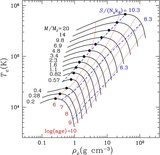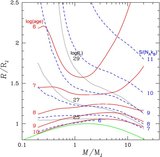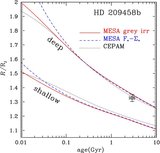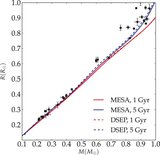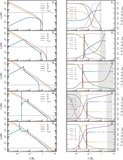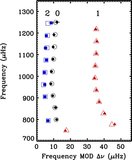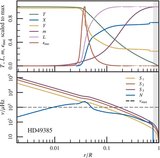Image Details

Caption: Figure 44.
Evolution of T c and ρ c in the massive rotating models. The locations of core helium, carbon, neon, oxygen, and silicon burning are labeled. A dashed curve marks the electron–positron pair-instability region where Γ 1 < 4/3. All models are rotating initially at 20% of critical rotation. The calculations include the effects of rotation and Spruit–Tayler magnetic fields as discussed in Section 6. Models with initial mass ⩽100 M ☉ have initial metallicity Z = 0.02, while models with mass ⩾120 M ☉ have initial metallicity Z = 0.001. The end of the line for each mass corresponds to the time of core collapse, defined as when any part of the collapsing core exceeds an infall velocity of 1000 km s −1. The tracks for the 60 M ☉ and 70 M ☉ overlap in this plot.
Copyright and Terms & Conditions
© 2013. The American Astronomical Society. All rights reserved.


